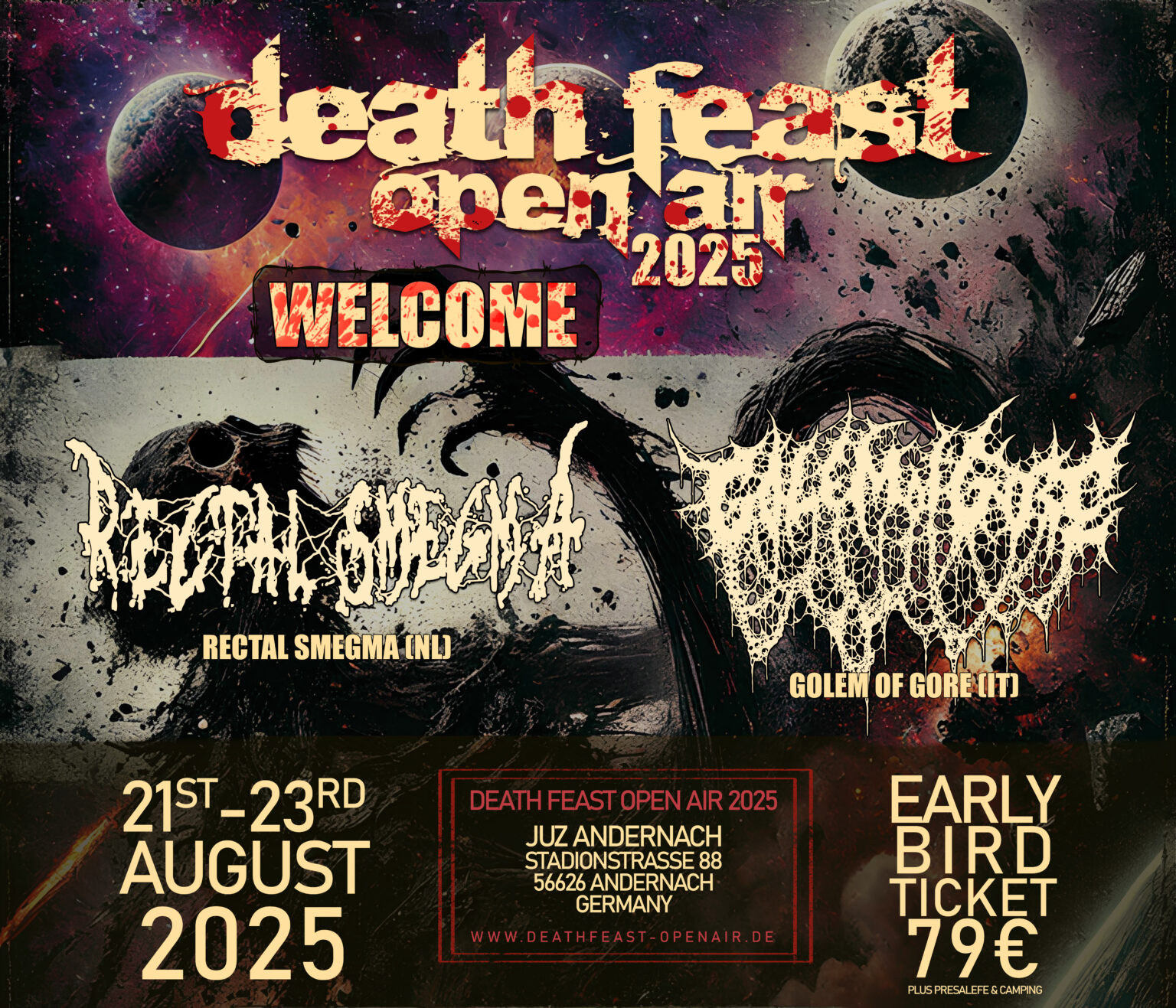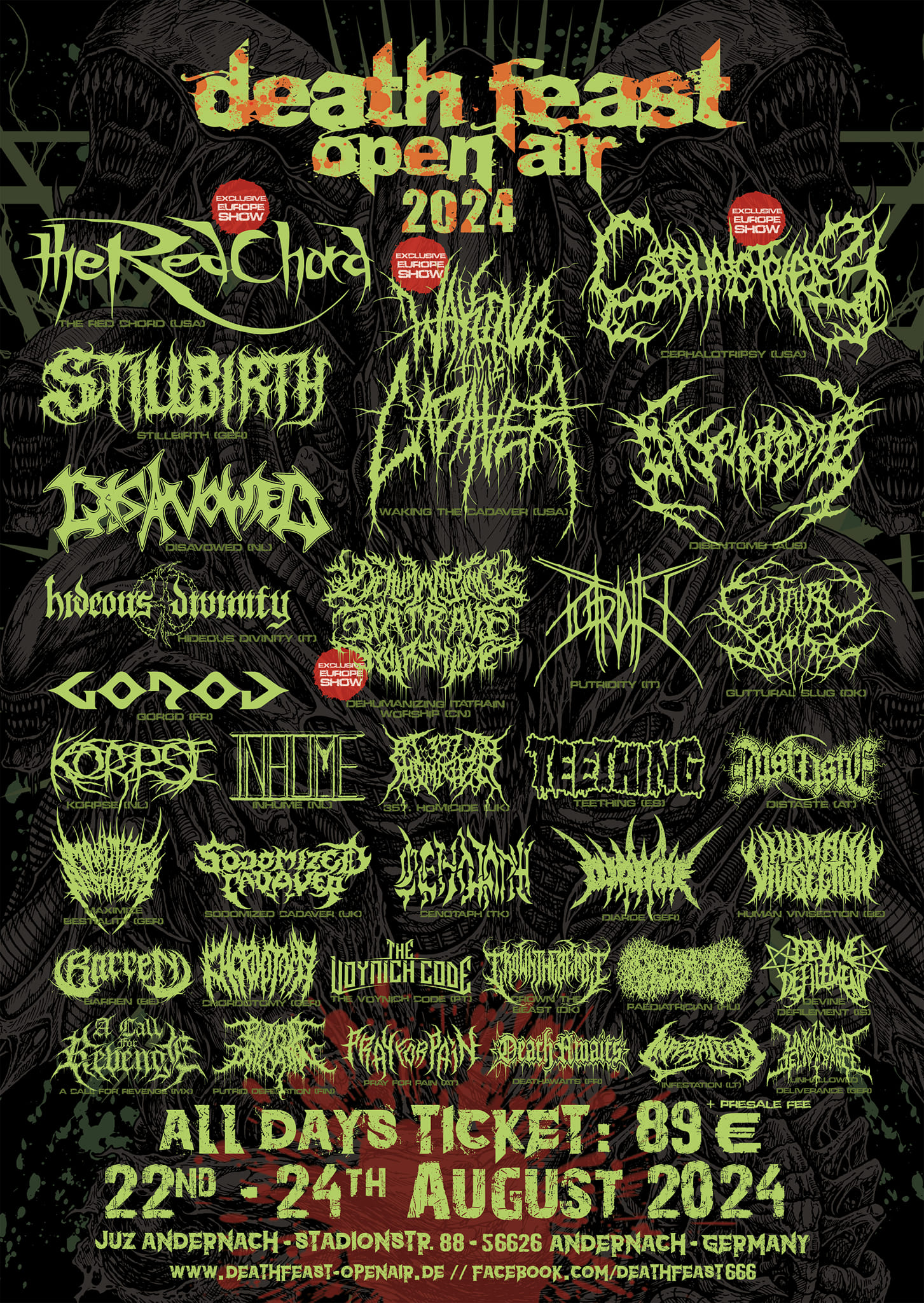Death Feast: The Dark Ritual That Has Fascinated Humanity For Centuries
There’s something about the concept of death feast that sends chills down our spines. Imagine a gathering where the line between life and mortality blurs, where traditions and rituals pay homage to the departed in ways that challenge the norms of modern society. Death feast, or what some might call a cannibalistic ritual, is not just a morbid fascination; it’s a deep dive into human culture, history, and the mysteries of ancient civilizations.
Let’s be honest here, the idea of consuming the remains of the dead might sound like something out of a horror movie. But hold on, it’s not as grim as it seems. Throughout history, cultures around the globe have practiced death feasts as a way to honor their ancestors, connect with the spiritual world, and even preserve the essence of the deceased. So, before we judge, let’s take a closer look at this fascinating tradition.
And don’t worry, we’re not here to freak you out. Instead, we’re diving deep into the world of death feasts, exploring their origins, cultural significance, and the science behind why people might engage in such practices. Whether you’re a history buff, a culture enthusiast, or just someone who loves a good mystery, this article is for you. So grab your favorite snack—hopefully not a death feast—and let’s get started!
What Exactly is a Death Feast?
First things first, let’s break down what we’re talking about here. A death feast, in its simplest form, is a ritual where the remains of the deceased are consumed by the living. Sounds creepy, right? But in many cultures, this act isn’t seen as cannibalism; instead, it’s viewed as a sacred rite that honors the dead and keeps their spirit alive.
This practice has been documented in various forms across different societies. Some tribes would consume a small portion of the deceased’s ashes mixed with food, while others would partake in more elaborate ceremonies involving the entire body. The idea behind it all is the belief that by ingesting the remains, the living can absorb the strength, wisdom, or even the soul of the departed.
Now, before you start picturing scenes from a zombie movie, remember that these rituals are deeply rooted in cultural and spiritual beliefs. They’re not about hunger or survival but about connection and remembrance. So, while it might seem strange to us today, it’s important to understand the context in which these practices took place.
Historical Context of Death Feast Practices
Death feasts have been around for thousands of years, with evidence found in ancient cultures all over the world. From the Fore people of Papua New Guinea to the Aztecs of Central America, these rituals played a significant role in their societies. Let’s take a quick trip back in time to explore some of the most notable examples:
The Fore Tribe: A Case Study in Cannibalism
The Fore tribe of Papua New Guinea is perhaps one of the most famous examples of death feast rituals. They practiced what’s known as “endocannibalism,” where they consumed members of their own community who had passed away. This wasn’t done out of necessity but as a way to show respect and love for the deceased.
- Women and children were primarily responsible for preparing the body.
- The ritual was believed to help the soul of the deceased transition to the afterlife.
- Unfortunately, this practice also led to the spread of a deadly disease called kuru, which ultimately forced the tribe to abandon their traditions.
Aztecs: A Different Kind of Feast
On the other side of the globe, the Aztecs had their own version of death feasts. They believed that by consuming the flesh of their enemies, they could gain their strength and power. While this might sound more aggressive, it was still rooted in spiritual beliefs about life, death, and the afterlife.
Interestingly, the Aztecs also practiced human sacrifice, which was often followed by a communal meal. This ritual was seen as a way to ensure the balance of the universe and appease the gods.
Cultural Significance of Death Feasts
So, why did people engage in these practices? What was the cultural significance behind them? Let’s break it down:
- Honor and Respect: In many cultures, death feasts were seen as the ultimate form of respect for the deceased. By consuming their remains, the living could ensure that their spirit would live on.
- Connection to the Divine: These rituals often involved spiritual elements, with participants believing that they were communing with the gods or ancestors through the act of consumption.
- Community Bonding: Death feasts were also a way to bring communities together, reinforcing social bonds and shared beliefs.
While these reasons might seem foreign to us today, they highlight the importance of cultural context in understanding historical practices. What might seem bizarre or even barbaric to one society could be a deeply meaningful tradition in another.
Scientific Perspectives on Death Feasts
Now, let’s bring in a little science. What does modern research tell us about death feasts and their effects on human health and psychology?
Health Risks and Benefits
One of the most well-known risks associated with death feasts is the spread of diseases like kuru, which we mentioned earlier. Kuru is a prion disease similar to mad cow disease, and it was transmitted through the consumption of infected brain tissue. This discovery ultimately led to the decline of death feast practices in many cultures.
However, some researchers argue that these rituals might have had certain benefits. For example, by consuming the remains of the deceased, participants could have been absorbing essential nutrients that were otherwise scarce in their diets. Of course, this doesn’t justify the practice, but it does offer an interesting perspective on its origins.
Psychological Implications
From a psychological standpoint, death feasts might have helped individuals cope with grief and loss. By participating in the ritual, they could feel a sense of closure and connection to the departed. This idea aligns with modern therapeutic practices that emphasize the importance of rituals in processing emotions.
Death Feast in Modern Times
Believe it or not, death feasts still exist in some form today, though they’ve evolved significantly. Modern practices might not involve actual consumption of human remains, but they still carry the same cultural and spiritual significance. Here are a few examples:
Funeral Rites Around the World
In many cultures, funerals are accompanied by meals shared among family and friends. These meals serve as a way to celebrate the life of the deceased and provide comfort to those who are grieving. While they might not be as extreme as ancient death feasts, they share the same underlying purpose of honoring the dead.
Symbolic Practices
Some modern rituals involve symbolic acts, such as scattering ashes in a meaningful location or creating memorials using the remains of the deceased. These practices allow people to connect with their loved ones in a safe and respectful way.
Controversies Surrounding Death Feasts
Of course, not everyone agrees with the concept of death feasts. There are ethical, legal, and cultural debates surrounding these practices that continue to this day. Let’s explore some of the key issues:
Ethical Concerns
Many people find death feasts morally questionable, especially in societies where cannibalism is taboo. The idea of consuming human remains, even in a ritualistic context, can be unsettling to some. This raises important questions about cultural relativism and the limits of tolerance.
Legal Implications
In most countries, practicing death feasts is illegal and can result in severe penalties. This is due to both health concerns and the moral implications of consuming human remains. However, in some places, symbolic practices are still allowed, as long as they don’t involve actual consumption.
Conclusion: Embracing the Mystery of Death Feasts
As we wrap up our journey into the world of death feasts, it’s clear that this topic is both fascinating and complex. From ancient rituals to modern adaptations, these practices have played a significant role in shaping human culture and understanding of mortality.
So, what can we take away from all of this? First, it’s important to approach these traditions with an open mind and a willingness to learn. While they might seem strange or even disturbing to us today, they were once vital parts of their respective cultures. Second, we should recognize the value of rituals in helping us process grief and connect with our loved ones, even after they’re gone.
And finally, if you’ve made it this far, congratulations! You’ve just expanded your knowledge of one of the most intriguing aspects of human history. Now, why not share this article with your friends and start a conversation? Or, if you’re feeling adventurous, dive deeper into the world of cultural anthropology and discover even more amazing traditions. After all, the more we learn about each other, the more we understand ourselves.
Table of Contents
- What Exactly is a Death Feast?
- Historical Context of Death Feast Practices
- Cultural Significance of Death Feasts
- Scientific Perspectives on Death Feasts
- Death Feast in Modern Times
- Controversies Surrounding Death Feasts
- Conclusion: Embracing the Mystery of Death Feasts

Deathfeast Open Air The most brutal Festival in Europe

Deathfeast Open Air The most brutal Festival in Europe

Deathfeast Open Air 2024 Stillbirth